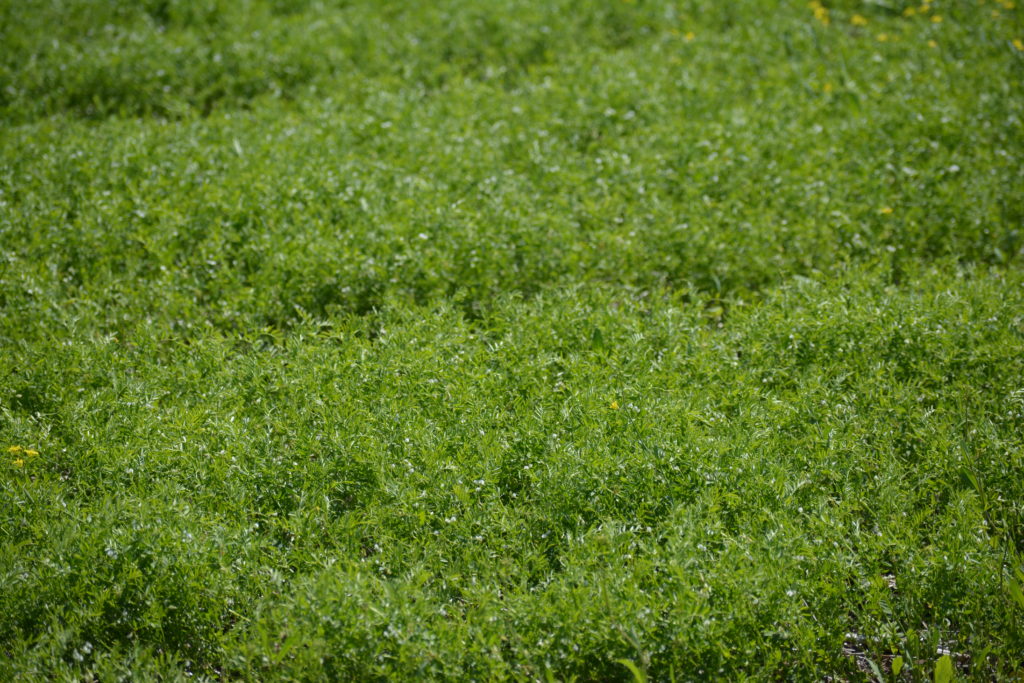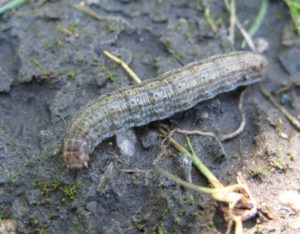Fall-related Considerations for Your 2021 Lentil Crop

In preparation for growing lentils in 2021, field selection, residue management and fall weed control should be considered in the fall of 2020.
While land rollers, flex headers, higher podding varieties and improved lodging resistance have allowed producers to grow lentils on less than ideal fields, it continues to be important to select fields with fewer rocks for harvest efficiency. Lentil plants have a very low tolerance to waterlogging and are susceptible to root diseases, so avoid selecting poorly draining soils as much as possible. Lentils do well on clay soil in lower rainfall areas, however, turn out better on sand and loam soils in soil zones with customarily higher precipitation or during growing seasons with higher than average rainfall. If lentil is grown on canola or mustard stubble, be prepared to consider a fungicide application for sclerotinia white mould.
Grow your lentils in fields where much nitrogen was extracted from the soil by the previous crop. Planting lentils in fields high in nitrogen prevents the plants from effectively forming nitrogen fixing nodules, increases disease pressure on a wet year due to an increase in vegetative growth and delays maturity. Although newer lentil varieties are generally more determinate than older varieties, excess nitrogen in the soil continues to heighten the risk of excessive vegetative growth instead of adequate seed set if rainfall continues in July and August.
Lentils are sensitive to some herbicide residues in the soil. Check cropping restrictions of herbicide chemistries applied over the past few years with other crops to realize if it’s okay to plant lentils. Some residues do not break down for two or more years, especially under dry growing conditions. If you are unsure about a field, submit soil samples to a lab for a bioassay.
Root rots have been more problematic in pulse crops over the past few years, with the same root rot pathogens generally affecting both pea and lentil. To help prevent root rot from occurring, leave 3 years between field pea and lentil crops or between lentil and lentil crops; 6 years if the aphanomyces pathogen is present.
Ensure a uniform lentil stand next spring by evenly spreading residue or straw from the previous crop. Good straw management not only prevents variable crop emergence, but also provides maximum efficacy of the pre-seed herbicide application. Further to this, lentils seeded into heavy crop residue are more susceptible to spring frost injury. Even spreading of excess straw allows additional bare soil to absorb the sun’s heat during the day, releasing it at night, minimizing potential frost injury.
Avoid market class contamination by not growing red and green lentil varieties in rotation on the same field for at least four years. Experienced producers assign specific fields for only red or only green lentil.
Lentil has a thin crop canopy at the onset of the growing season, making it a poor competitor with weeds. Wild oat, as well as volunteer wheat and barley, are important weeds to control because they are difficult to clean from the smaller seeded lentil varieties. Given that some wild oats are resistant to Group 1 (i.e.: Poast Ultra) and Group 2 (i.e.: Odyssey) herbicides, a wider herbicide rotation slows their resistance development. Therefore, it is important to consider a fall application of a soil-applied granular herbicide like ethalfluralin (Edge), which uses a Group 3 mode of action. Edge suppress wild oat, volunteer barley and volunteer wheat as well as controlling other weeds resistant to other herbicide groups. Edge is the preferable fall applied herbicide in the Brown and Dark Brown soil zones because it also controls kochia, which can be resistant to Group 2 (i.e.: Odyssey) and Group 9 (i.e.: glyphosate) herbicides. Edge is only registered in lentil production for fall application. While Edge can be successfully applied without incorporation later in the fall when daylight hours are shorter, reducing chance of photo degradation, registered practice is to incorporate with a heavy harrow operation to ensure herbicide/soil contact while also evenly spreading crop residue. As a soil applied herbicide, Edge controls susceptible weeds in the treated soil layer as weeds geminate in the spring. Some Group 14 and Group 15 herbicides can be applied in the fall, providing lentil growers with more weed control options. However, they don’t have the same residual effect as Edge to provide season-long weed control the following year. Moisture is necessary to activate Group 15 (pyroxasulfone). Focus (Groups 14 and 15) can be applied in the spring or the fall, controlling some grassy and broadleaf weeds. However, caution is advised as Focus can damage lentil growth when growing conditions are not optimal, i.e.: high soil pH (7.5 and above), cool weather, prolonged and excessive moisture, seedling diseases, and poor agronomic practices, i.e.: shallow seeding. Although research shows that lentil crops generally recover from damage by Focus, nonetheless, setting a lentil crop back always puts it at more risk of flower abortion during July heat, which can reduce overall yield. Valtera/Chateau (Group 14) is only registered for fall application in lentil production. However, over-use of Group 14 herbicides can lead to selection pressure for weed resistance. Therefore, do not apply Heat, also a Group 14 herbicide, as a pre-seed burnoff in the spring when a Group 14 herbicide is applied in the fall.
–Neil Whatley
If you have any additional questions for Neil please contact CARA for his contact information


